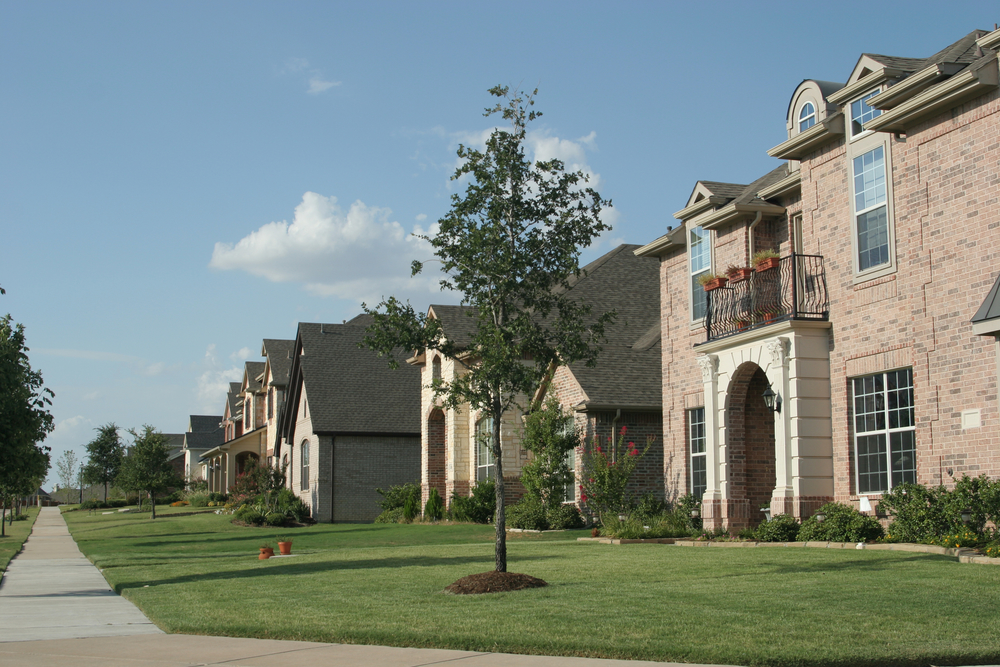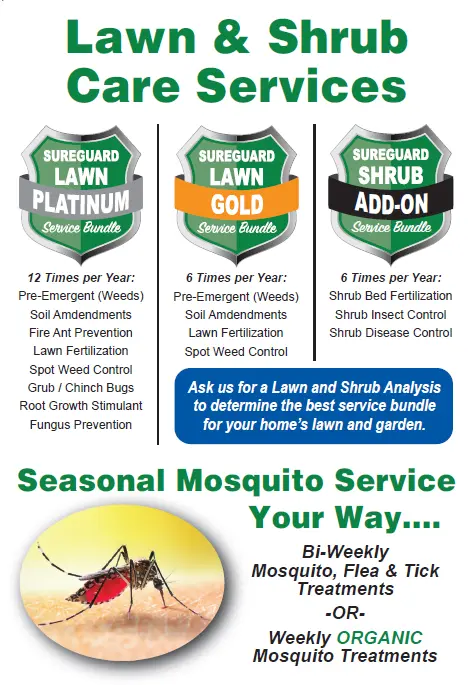Lawn Aeration in Plano, TX
Something that often leads to a decline in lawn health is soil compaction. This condition can occur due to heavy traffic on your lawn or build-up of thatch, and it denies lawn grass the nutrients and hydration that it needs to flourish. The best solution to the soil compaction problem is core aeration performed by a licensed lawn care company in Plano.
Help Your Grass Thrive with Core Aeration
The lawn care professionals at Sureguard Lawn & Pest can provide timely core aeration services in Plano. This process involves removing plugs of soil with an aerator machine so that air, water, and the nutrients can reach the roots of your grass without obstruction. Regular lawn aeration services will preserve the good health of your lawn season after season.
Some good reasons to schedule core aeration for your lawn in Plano include:
- By alleviating soil compaction, lawn aeration helps your grass receive sufficient soil nutrients, water, and air.
- Core aeration removes the layer of thatch that often builds up on lawns, reducing the risk of disease and pest infestations.
- Because aeration helps water soak into your lawn, the chances of puddles forming and flooding occurring are lowered.
Two rounds of core aeration services in Plano per year will give you the greenest, healthiest lawn on the block. The first round of lawn aeration should be performed in spring to prepare your lawn for the scorching heat and drought of summer. Schedule the second core aeration service for fall in order to make sure your lawn is in the best shape possible before going dormant during the winter.
Top-Quality Lawn Aeration Services in DFW
Aerating your lawn at the right times of year will keep your grass hydrated and nourished all year long. Get in touch with Sureguard Lawn & Pest today for the ultimate lawn aeration services in the Plano area!


Lawn Aeration FAQs
Along with mowing and fertilization, lawn aeration is one of the lawn care services you’ll often hear brought up. However, unlike lawn mowing and fertilizing, a lot of people aren’t quite sure what lawn aeration is – or why it’s important. Lawn aeration is a process that involves perforating the soil with small holes to allow air, water, and nutrients to penetrate down to the grass roots. This helps the roots grow deeper and produce a stronger, more beautiful lawn.
Lawn aeration is accomplished using a hand-pushed tool known as an aerator. There are a couple of different styles of lawn aerators; some remove plugs of soil from the lawn while others use pointed spikes to punch holes deep into the soil.
It’s a good idea to aerate your lawn in Dallas every year or two to keep your grass healthy. Lawn aeration can be beneficial for the following reasons:
- Over time, the soil beneath lawns can become compacted, limiting the movement of water, air, and key nutrients, thereby resulting in the decline of grass health. Lawn aeration alleviates soil compaction, giving your grass access to everything it needs to thrive.
- Lawn aeration helps soil absorb water more efficiently, reducing runoff and puddling, as well as lowering the risk of your grass being dehydrated.
- Lawn aeration breaks down thatch, a layer of organic matter that can build up on the soil. Thatch makes your lawn more vulnerable to drought, stress, disease, and pests.
Lawn aeration is a process in which tools are used to create evenly distributed holes throughout the soil beneath your lawn. Aeration brings several benefits to your lawn in Dallas, including:
- Improved Airflow: Aeration helps alleviate soil compaction, which can occur in your lawn due to frequent foot traffic or heavy machinery, and is especially prevalent in the clay-rich soils common in Dallas. Compacted soil restricts grass root growth and limits the movement of air within the soil. Aeration creates channels in the soil, improving airflow so that your grass can get all the oxygen it needs.
- Enhanced Nutrient Uptake: By loosening compacted soil, aeration also improves the penetration of fertilizers, allowing grass roots to access essential nutrients more effectively. Aeration can result in improved nutrient uptake by your lawn so that it can grow at a healthy rate.
- Reduced Thatch Buildup: Thatch is a layer of dead grass, roots, and other organic matter that accumulates on the surface of your lawn’s soil. Too much thatch can prevent water, air, and nutrients from reaching the soil, and also makes your lawn more vulnerable to pests and diseases. Lawn aeration breaks up thatch and allows for its decomposition.
- Better Water Infiltration: Compacted soil can prevent water from penetrating the soil surface, leading to wasteful runoff. Aeration makes it much easier for water to infiltrate your soil and nourish your grass roots, keeping them hydrated at all times. something that is especially vital during summer heat waves in Dallas.
- Stress Resistance: Aerating your lawn improves its resilience to environmental stressors such as drought, heat, and disease. Healthy, well-aerated soil supports stronger root systems, which enables grass to withstand stress more effectively.
While not talked about as often as mowing or fertilization, aeration is an important lawn maintenance task that improves the long-term health of your grass. Aeration breaks up soil compaction and thatch, while also creating holes in the soil that allow for better air and water flow. In doing so, aeration makes it easier for your lawn to flourish. It is recommended to aerate your lawn every 1-2 years to maintain ideal soil conditions for your grass. If you live in the Dallas area, you should aerate your lawn in either spring or fall.
The best time to aerate your lawn is partially dependent on what type of grass you have. For warm-season grass species commonly found in Dallas lawns, such as Bermuda, St. Augustine and Zoysia, you should aerate in spring between late March and early May. This will help your lawn to grow vigorously during summer. Alternatively, fall aeration can relieve summer soil compaction and promote healthier root growth in preparation for winter. You can aerate in fall between late August and early October.
It is not recommended to aerate your lawn in the summer – between late May and early August – especially during periods of extreme heat or drought. The stress placed on lawns by summer heat may hinder the positive effects of aeration. Additionally, aerating when the soil is too wet can cause soil compaction rather than alleviating it. Try to schedule lawn aeration in Dallas when your soil is moist but not waterlogged.

